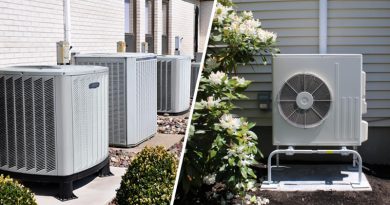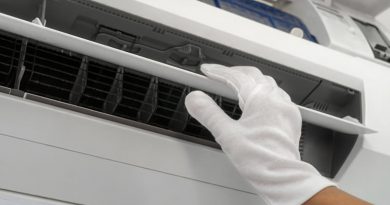What can be done to increase the energy efficiency of heating and cooling systems?
Heating and cooling systems are essential for maintaining a comfortable indoor environment, but they can also contribute to significant energy consumption. As energy efficiency becomes increasingly important for both cost savings and environmental sustainability, it’s crucial to explore ways to enhance the efficiency of these systems. In this article, we will discuss various strategies and practices that can help increase the energy efficiency of heating and cooling systems in your home.
1. Regular Maintenance and Tune-ups
Regular maintenance and tune-ups are key to optimizing the energy efficiency of heating and cooling systems. Scheduling annual professional inspections ensures that the systems operate at their peak performance. During these inspections, technicians can clean or replace air filters, check for leaks, lubricate moving parts, and perform other necessary maintenance tasks. By keeping the systems clean and well-maintained, energy waste is minimized, and efficiency is maximized.
2. Programmable Thermostats for Efficient Temperature Control
Installing programmable thermostats is a simple yet effective way to increase energy efficiency. These thermostats allow you to set specific temperature schedules based on your daily routine. For example, you can adjust the temperature to be lower when you’re away from home or asleep and raise it just before you return or wake up. This ensures that energy is not wasted on unnecessary heating or cooling, resulting in significant energy savings over time.
3. Proper Insulation and Sealing
Proper insulation and sealing play a crucial role in preventing energy loss. Well-insulated homes retain heat during the winter and stay cool during the summer, reducing the workload on heating and cooling systems. Inspect your home for any air leaks, such as around windows, doors, and vents, and seal them with weatherstripping or caulking. Additionally, consider improving insulation in attics, walls, and floors to further enhance energy efficiency.
4. Efficient System Upgrades
Upgrading to more energy-efficient heating and cooling systems can have a significant impact on energy consumption. When replacing older systems, look for models with high Seasonal Energy Efficiency Ratio (SEER) and Annual Fuel Utilization Efficiency (AFUE) ratings. Energy-efficient options often incorporate advanced technologies, such as variable-speed motors or multi-stage compressors, which allow the systems to operate at lower energy levels when full capacity is not required.
5. Smart Energy Management Systems
Smart energy management systems offer advanced features that optimize energy efficiency. These systems use sensors, algorithms, and data analysis to monitor and adjust the heating and cooling settings based on occupancy patterns and weather conditions. Some smart systems can even learn from user preferences and automatically make energy-saving adjustments. By leveraging technology, homeowners can achieve precise control and further reduce energy waste.
Implementing these strategies and practices can lead to substantial energy savings and a more environmentally friendly home. By increasing the energy efficiency of your heating and cooling systems, you not only reduce your carbon footprint but also enjoy long-term cost savings on energy bills.
Remember, small changes and conscious efforts can make a significant difference in the energy efficiency of your heating and cooling systems. Whether it’s regular maintenance, installing programmable thermostats, improving insulation, upgrading to efficient systems, or utilizing smart energy management, every action contributes to a more sustainable and comfortable living space.
So, take the initiative to implement these energy-saving practices and enjoy the benefits of increased energy efficiency in your home.




